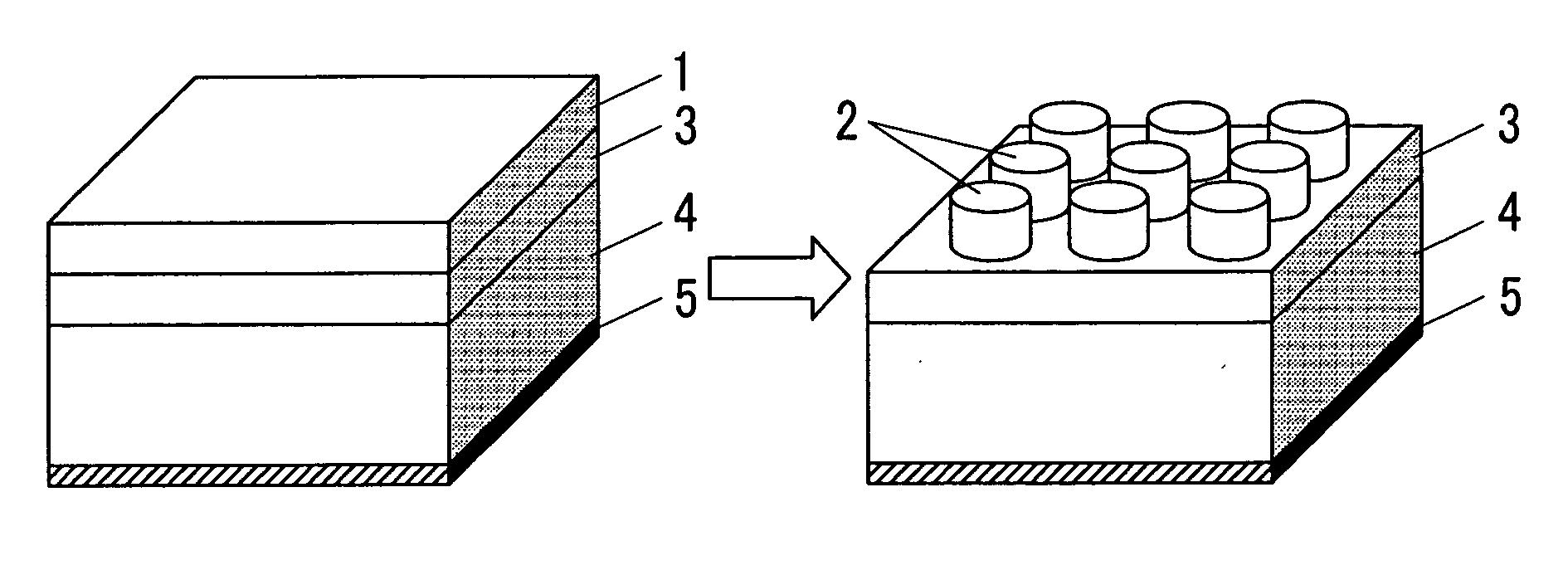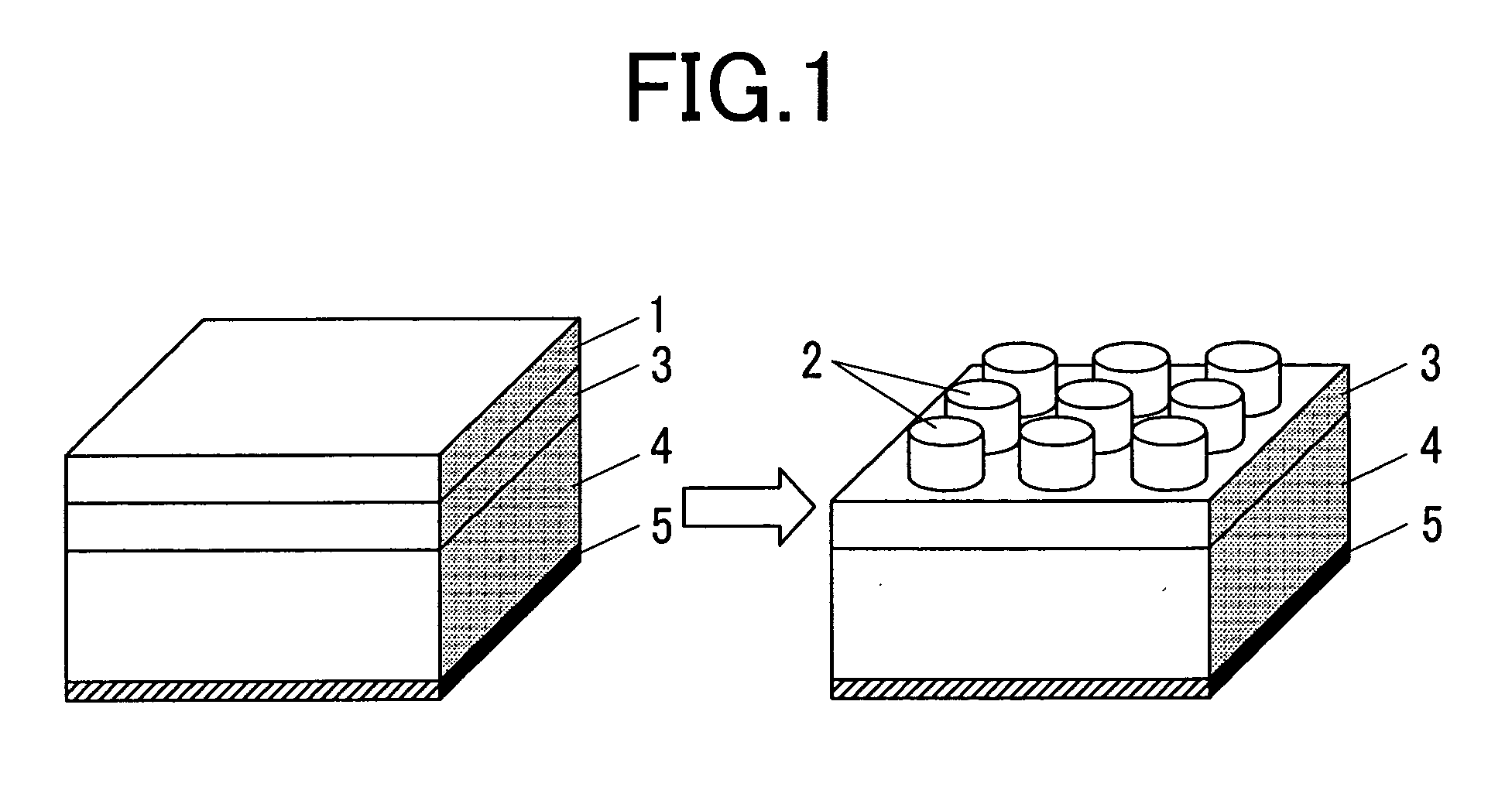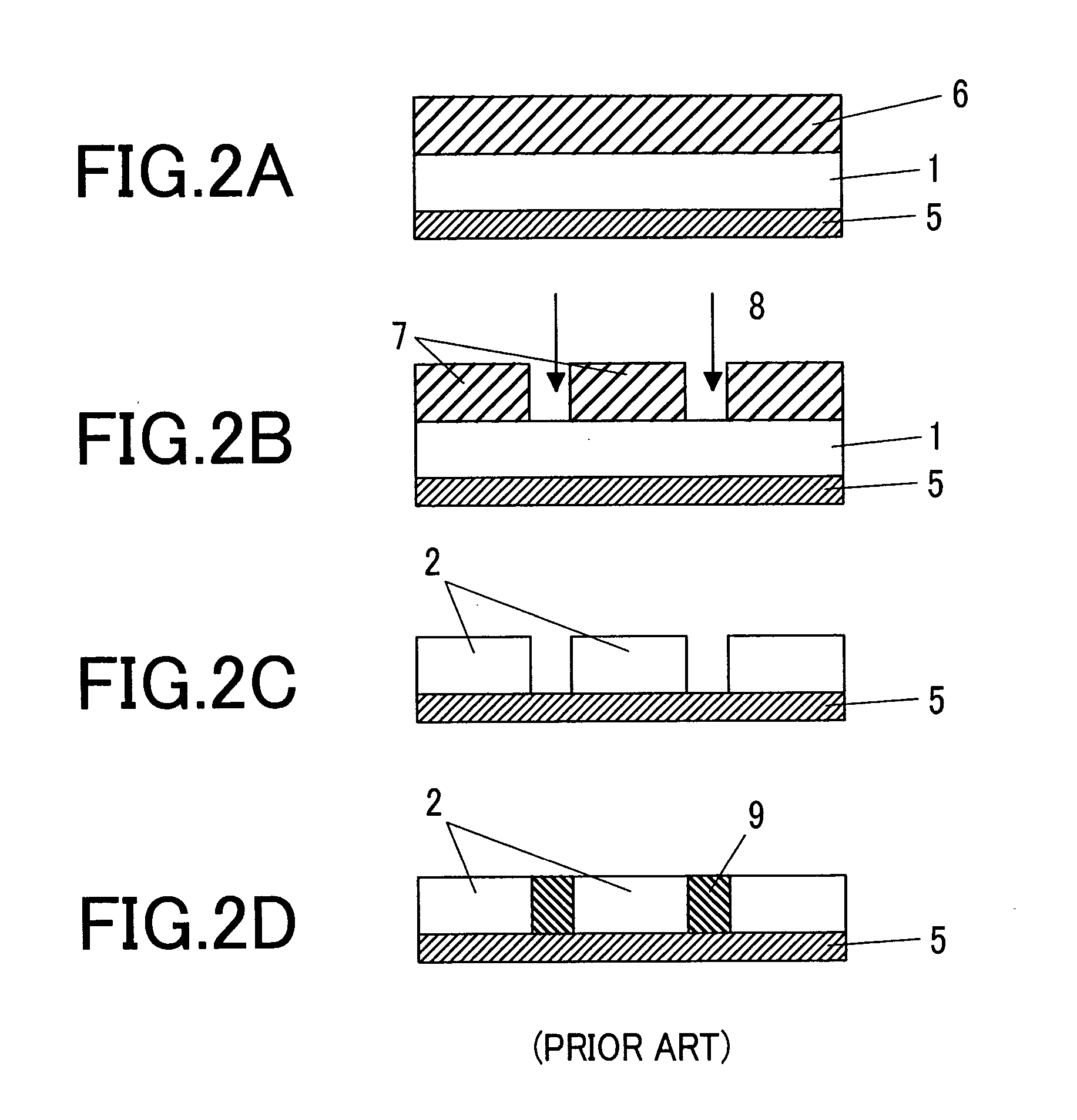Method for producing recording medium, recording medium employing said method, and information recording and reproducing apparatus
a technology which is applied in the field of information recording and reproducing apparatus, can solve the problems of preventing accurate pattern transfer, difficult control of the shape or dimension of the micropattern obtained by processing, and not being realistic from the viewpoint of mass production, etc., to achieve accurate pattern transfer, facilitate the control of the processed shape or dimension, and high recording densities
- Summary
- Abstract
- Description
- Claims
- Application Information
AI Technical Summary
Benefits of technology
Problems solved by technology
Method used
Image
Examples
embodiment 1
[0051] Initially, a nano-particle as the material for a mask was prepared. Several processes are known for manufacturing nano-particles, of which a chemical synthetic process that will be described below is the most suitable for obtaining nano-particles with uniform grain size with a grain size distribution or 10% or less. A metal ion as a raw material was reduced in an organic solvent or an inorganic solvent containing water, thereby obtaining a metal atom. The metal atom, or a metal atom obtained by removing coordinate organic compounds around the metal atom, was then subjected to nucleus growth to obtain a metal nano-particle with a desired grain size. The metal ion or metal atom as the raw material may consist of a single element or a plurality of elements. When a plurality of elements are involved, an alloy nano-particle can be obtained. The grain size in the diameter range of 1 nm or greater and 100 nm or less can be controlled by optimizing factors such as the structure of th...
embodiment 2
[0058] An Au nano-particle single-layered film was formed on the entire surface of the magnetic layer by Langmuir-Blodgett (LB) process, instead of the spin coating process used Embodiment 1. In the present embodiment too, a solution of colloidal Au nano-particles with the diameter of 20 nm coated with dodecanethiol with the length of 4 nm was used.
[0059] In the following, a process of forming a nano-particle film by the LB process is described. The LB film is formed by adding the colloidal solution of metal nano-particles dropwise to clear water surface in a trough, thereby forming a single-layered film of nano-particles on the water surface. A movable barrier is then moved to slowly and gently compress the single-layered film floating on the water surface. Specifically, after washing the bottom, edges, and the movable barrier plate of the trough (water tank) of an LB film manufacturing apparatus with acetone, the trough was filled with ion-exchange water. The level of the water b...
embodiment 3
[0063] In Embodiments 1 and 2, the nano-particle film was formed on the entire surface of the magnetic layer. In Embodiment 3, an example is described in which the nano-particle film is partially formed on the magnetic layer. The soft magnetic layer, intermediate layer, and magnetic layer applied to the substrate were the same as those of Embodiments 1 and 2.
[0064]FIG. 11 shows a process for preparing the partial nano-particle film using a mold. Initially, a process of preparing a pattern transfer mold is described with reference to FIGS. 11A to 11D. Referring to FIG. 11A, a latent image of a desired micropattern is formed in a resist layer 28 formed on a molding substrate (such as that of SiN) 27, using EB lithography or optical lithography 29. The resist layer is then developed as shown in FIG. 11B, thereby exposing a micropattern 30 on the substrate of SiN or the like. The micropattern may be a concentric line-and-space pattern or it may be a lattice-shaped pattern such that con...
PUM
| Property | Measurement | Unit |
|---|---|---|
| grain size distribution | aaaaa | aaaaa |
| diameter | aaaaa | aaaaa |
| diameter | aaaaa | aaaaa |
Abstract
Description
Claims
Application Information
 Login to View More
Login to View More - R&D
- Intellectual Property
- Life Sciences
- Materials
- Tech Scout
- Unparalleled Data Quality
- Higher Quality Content
- 60% Fewer Hallucinations
Browse by: Latest US Patents, China's latest patents, Technical Efficacy Thesaurus, Application Domain, Technology Topic, Popular Technical Reports.
© 2025 PatSnap. All rights reserved.Legal|Privacy policy|Modern Slavery Act Transparency Statement|Sitemap|About US| Contact US: help@patsnap.com



